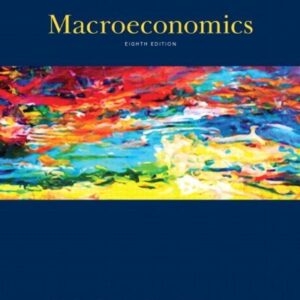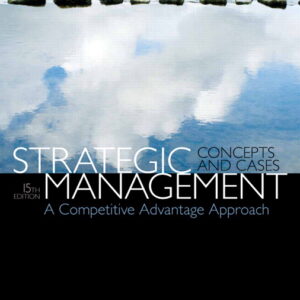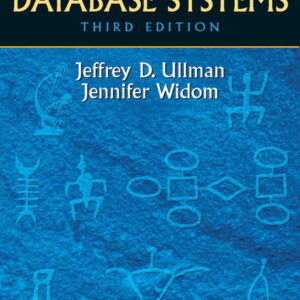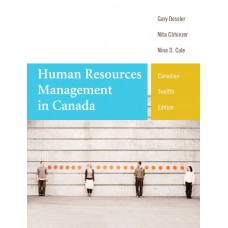International Economics Theory and Policy Krugman 10th Edition Solutions Manual
$35.00
International Economics Theory and Policy Krugman 10th Edition Solutions Manual
International Economics Theory and Policy Krugman 10th Edition Solutions Manual
International Economics Theory and Policy Krugman Obstfeld 10th Edition Solutions Manual
*** YOU ARE BUYING the Solution Manual ***
Name: International Economics Theory and Policy
Author: Krugman Obstfeld
Edition: 10th
Type: Solutions Manual
– The file contains solutions and questions to all chapters and all questions. All the files are carefully checked and accuracy is ensured.
– .doc, .padf, excel, or zipped in the package and can easily be read on PCs and Macs.
– Delivery is INSTANT. IMMEDIATELY once payment is done.
If you have any questions, please feel free to contact us. Our response is the fastest. All questions will always be answered in 6 hours., most of the time within 30mins
We also faced similar difficulities when we were students, and we understand how you feel.
But now, with the International Economics Theory and Policy Solution Manual, you will be able to
* Have your homework problems solved readily.
* Reduces the hassle and stress of your student life.
* Improve your studying and also get a better grade!
* Get prepared for examination questions.
*Can save you time and help you understand the material.
This is the quality of service we are providing and we hope to be your helper.
Solution Manual is accurate.
Prepare to receive your International Economics Theory and Policy Solution Manual in the next moment.
If you have any questions, or would like a receive a sample chapter before your purchase, please contact us at [email protected]
International Economics Theory and Policy Solution Manual
International Economics Theory and Policy Krugman Obstfeld 10th Edition Solutions Manual
Chapter 2
World Trade: An Overview
- n?Chapter Organization
Who Trades with Whom?
Size Matters: The Gravity Model
Using the Gravity Model: Looking for Anomalies
Impediments to Trade: Distance, Barriers, and Borders
The Changing Pattern of World Trade
Has the World Gotten Smaller?
What Do We Trade?
Service Offshoring
Do Old Rules Still Apply?
Summary
- n?Chapter Overview
Before entering into a series of theoretical models that explain why countries trade across borders and the benefits of this trade (Chapters 3–11), Chapter 2 considers the pattern of world trade that we observe today. The core idea of the chapter is the empirical model known as the gravity model. The gravity model is based on the observations that (1) countries tend to trade with nearby economies and (2) trade is proportional to country size. The model is called the gravity model, as it is similar in form to the physics equation that describes the pull of one body on another as proportional to their size and distance.
The basic form of the gravity equation is Tij = A ´ Yi ´ Yj/Dij. The logic supporting this equation is that large countries have large incomes to spend on imports and produce a large quantity of goods to sell as exports. This means that the larger that either trade partner is, the larger the volume of trade between them. At the same time, the distance between two trade partners can substitute for the transport costs that they face as well as proxy for more intangible aspects of a trading relationship such as the ease of contact for firms. This model can be used to estimate the predicted trade between two countries and look for anomalies in trade patterns. The text shows an example where the gravity model can be used to demonstrate the importance of national borders in determining trade flows. According to many estimates, the border between the United States and Canada has the impact on trade equivalent to roughly 1,500–2,500 miles of distance. Other factors such as tariffs, trade agreements, and common language can all affect trade and can be incorporated into the gravity model.
The chapter also considers the way trade has evolved over time. Although people often feel that globalization in the modern era is unprecedented, in fact, we are in the midst of the second great wave of globalization. From the end of the 19th century to World War I, the economies of different countries were quite connected, with trade as a share of GDP higher in 1910 than in 1960. Only recently have trade levels surpassed pre–World War I trade. The nature of trade has changed, though. The majority of trade is in manufactured goods with agriculture and mineral products making up less than 20 percent of world trade. Even developing countries now primarily export manufactures. A century ago, more trade was in primary products as nations tended to trade for things that literally could not be grown or found at home. Today,
the motivations for trade are varied, and the products we trade are increasingly diverse. Despite increased complexity in modern international trade, the fundamental principles explaining trade at the dawn of the global era still apply today. The chapter concludes by focusing on one particular expansion of what is “tradable”—the increase in services trade. Modern information technology has expanded greatly what can be traded as the person staffing a call center, doing your accounting, or reading your X-ray can literally be halfway around the world. Although service outsourcing is still relatively rare, the potential for a large increase in service outsourcing is an important part of how trade will evolve in the coming decades. The next few chapters will explain the theory of why nations trade.
- n?Answers to Textbook Problems
- We saw that not only is GDP important in explaining how much two countries trade, but also, distance is crucial. Given its remoteness, Australia faces relatively high costs for transporting imports and exports, thereby reducing the attractiveness of trade. Because Canada has a border with a large economy (the United States) and Australia is not near any other major economy, it makes sense that Canada would be more open and Australia more self-reliant.
- Mexico is quite close to the United States, but it is far from the European Union (EU), so it makes sense that it trades largely with the United States. Brazil is far from both, so its trade is split between the two. Mexico trades more than Brazil in part because it is so close to a major economy (the United States) and in part because it is a member of a trade agreement with a large economy (NAFTA). Brazil is farther away from any large economy and is in a trade agreement with relatively small countries.
- No, if every country’s GDP were to double, world trade would not quadruple. Consider a simple example with only two countries: A and B. Let country A have a GDP of $6 trillion and B have a GDP of $4 trillion. Furthermore, the share of world spending on each country’s production is proportional to each country’s share of world GDP (stated differently, the exponents on GDP in Equation 2-2, a and b, are both equal to 1). Thus, our example is characterized by the table below:
| Country | GDP | Share of World Spending |
| A | $6 trillion | 60% |
| B | $4 trillion | 40% |
Now let’s compute world trade flows in this example. Country A has an income of $6 trillion and spends 40 percent of that income on country B’s production. Thus, exports from country B to country A are equal to $6 trillion ´ 40% = $2.4 trillion. Country B has an income of $4 trillion and spends 60 percent of this on country A’s production. Thus, exports from country A to country B are equal to $4 trillion ´ 60% = $2.4 trillion. Total world trade in this simple model is $2.4 + $2.4 = $4.8 trillion.
What happens if we double GDP in both countries? Now GDP in country A is $12 trillion, and GDP in country B is $8 trillion. However, the share of world income (and spending) in each country has not changed. Thus, country A will still spend 40 percent of its income on country B products, and country B will still spend 60 percent of its income on country A products. Exports from country B to country A are equal to $12 trillion ´ 40% = $4.8 trillion. Exports from country A to country B are $8 trillion ´ 60% = $4.8 trillion. Total trade is now equal to $4.8 + $4.8 = $9.6 trillion. Looking at trade before and after the doubling of GDP, we see that total trade actually doubled, not quadrupled.
- As the share of world GDP that belongs to East Asian economies grows, then in every trade relationship that involves an East Asian economy, the size of the East Asian economy has grown. This makes the trade relationships with East Asian countries larger over time. The logic is similar to why the countries trade more with one another. Previously, they were quite small economies, meaning that their markets were too small to import a substantial amount. As they became more wealthy and the consumption demands of their populace rose, they were each able to import more. Thus, while they previously had focused their exports to other rich nations, over time they became part of the rich nation club and thus were targets for one another’s exports. Again, using the gravity model, when South Korea and Taiwan were both small, the product of their GDPs was quite small, meaning that despite their proximity, there was little trade between them. Now that they have both grown considerably, their GDPs predict a considerable amount of trade.
- As the chapter discusses, a century ago much of world trade was in commodities, which were in many ways climate or geography determined. Thus, the United Kingdom imported goods that it could not make itself. This meant importing things like cotton or rubber from countries in the Western Hemisphere or Asia. As the United Kingdom’s climate and natural resource endowments were fairly similar to those of the rest of Europe, it had less of a need to import from other European countries. In the aftermath of the Industrial Revolution, where manufacturing trade accelerated and has continued to expand with improvements in transportation and communications, it is not surprising that the United Kingdom would turn more to the nearby and large economies in Europe for much of its trade. This result is a direct prediction of the gravity model.
Be the first to review “International Economics Theory and Policy Krugman 10th Edition Solutions Manual” Cancel reply
Related products
Solution Manual
Solution Manual
Advanced Financial Accounting Baker Christensen Cottrell 9th Edition Solutions Manual












Reviews
There are no reviews yet.